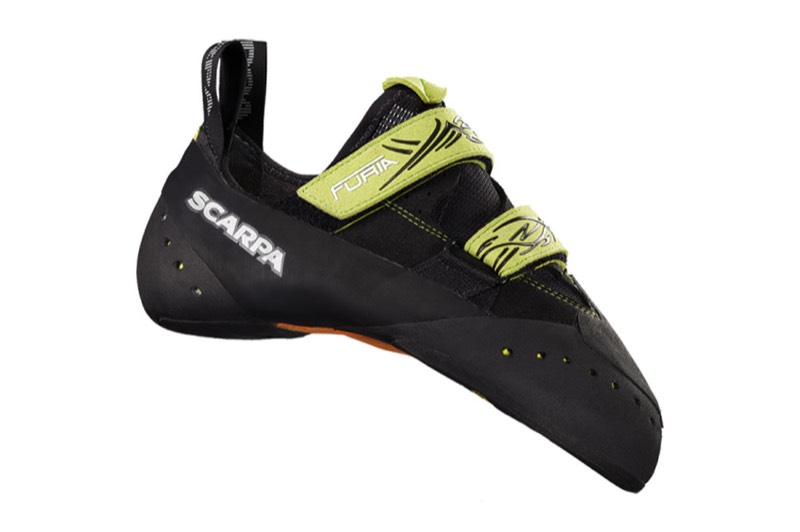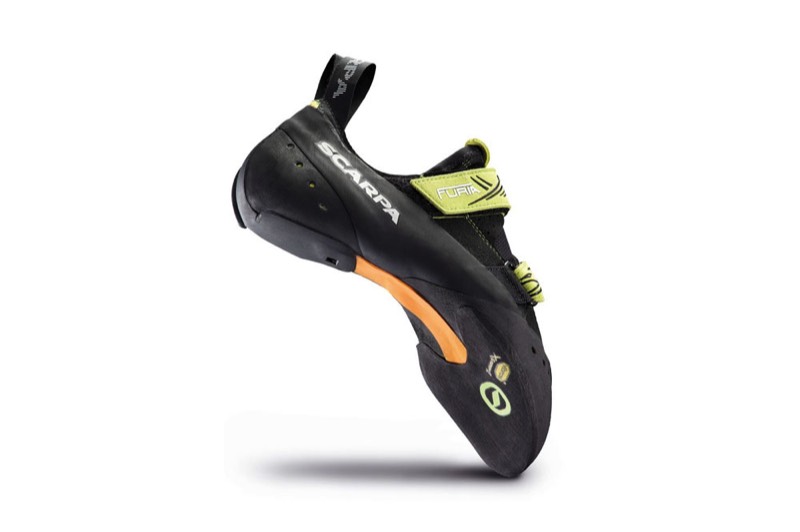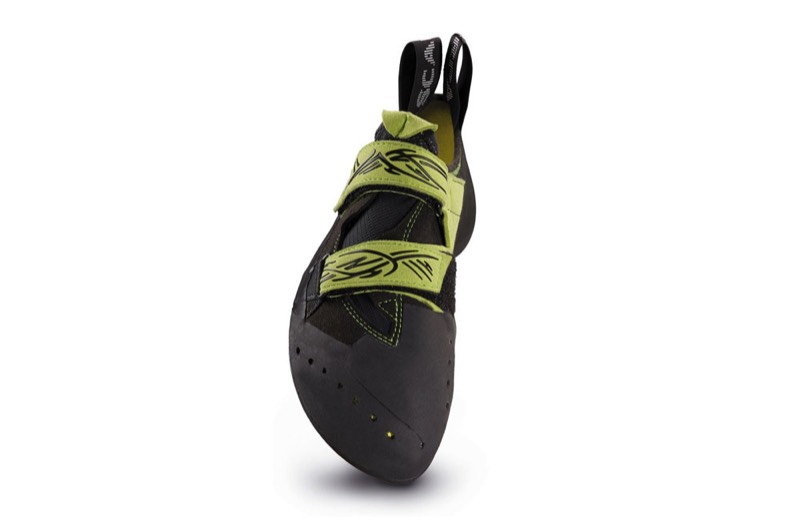Scarpa Furia – Setting new standards for precision, power and sensitivity.
Scarpa’s new Furia is the kind of shoe that will have most reviewers scrambling to find enough superlatives to describe its performance. Seriously, I can’t remember ever using a shoe that was this soft and yet delivered this level of precision. Maybe I shouldn’t be that surprised, as this is the latest creation from Scarpa’s legendary climbing shoe designer, Heinz Mariacher. If you don’t know who Heinz Mariacher is, put down your selfie-stick and spend a few minutes online reading about his climbing (and shoe design) accomplishments. He has a resume that few climbers will ever match. And it’s this wealth of experience that has helped Heinz create the new Furia.
At the heart of the shoe is a patented orange-coloured Power-Connection-Band (PCB) that runs along the outsole connecting the forefoot and heel. This tensioned band provides power and precision when standing on small holds without resorting to stiffer and sensitivity-robbing midsoles.
At the heart of the shoe is a patented orange-coloured Power-Connection-Band (PCB) that runs along the outsole connecting the forefoot and heel. This tensioned band provides power and precision when standing on small holds without resorting to stiffer and sensitivity-robbing midsoles.

Scarpa Furia
This construction lets Scarpa spec a super-soft forefoot (no midsole), which allows for a startling level of sensitivity. You can easily sense any foothold irregularities and features, and grabbing and pulling on larger footholds feels effortless. With similarly soft shoes, transitioning onto less steep terrain would normally result in downgraded performance, but thanks to the Furia’s PCB, the shoe feels incredibly precise and supportive.
While much of this versatility and performance can be attributed to the PCB, it would be unfair to ignore the role of the Furia’s highly asymmetric last and down-turned construction. The shoe’s aggressive overall shape helps drive power to the big toe allowing for an unprecedented level of precision in such a soft shoe; these things are deadly on steep pocketed routes or boulder problems. And thanks to the full-coverage sticky-rubber forefoot cap, the Furia is highly effective on tenuous toe-hooks and scums.
While much of this versatility and performance can be attributed to the PCB, it would be unfair to ignore the role of the Furia’s highly asymmetric last and down-turned construction. The shoe’s aggressive overall shape helps drive power to the big toe allowing for an unprecedented level of precision in such a soft shoe; these things are deadly on steep pocketed routes or boulder problems. And thanks to the full-coverage sticky-rubber forefoot cap, the Furia is highly effective on tenuous toe-hooks and scums.

Scarpa Furia PCB Detail
In the back, the Furia sports a snug-fitting and relatively low-volume heel cup that is also wrapped in sticky Vibram rubber. While this would normally be enough for most climbing shoe companies, Heinz and Scarpa have added a vertically oriented rubber rib on the medial side of the heel. This slight protrusion increases security (especially when hooking aretes), without compromising the foot-confirming fit necessary during more conventional hooking manoeuvres.
As for the closure and upper, the Furia has a ubiquitous (and effective) two-Velcro strap system while the thin microsuede upper easily molds to the foot and offers improved flexibility compared to thicker natural or synthetic uppers.
As for the closure and upper, the Furia has a ubiquitous (and effective) two-Velcro strap system while the thin microsuede upper easily molds to the foot and offers improved flexibility compared to thicker natural or synthetic uppers.

Scarpa Furia Closure
In use, it’s difficult to ignore that the Furia is a rather specialized shoe. Its powerful fit and lack of midsole make it less than ideal for easy longer routes or vertical cragging. But as the route-angle increases and the movement becomes more challenging (and the footholds become less secure), the Furia really starts to shine. You really need to experience this shoe to appreciate its sensitivity, precision and control. As I mentioned earlier, the fit gravitates towards the more powerful end of the spectrum, which may put off some newer climbers, but it’s this fit that allows the shoe to perform so well in its intended terrain. In fact, this is as close to a game-changer (in terms of climbing shoes) as I’ve experienced over the last few years. Anyone that spends time route climbing or bouldering on steep terrain, should seriously look at the Scarpa Furias – they are that good.
You can find out more about the new Furia and other Scarpa products at www.scarpa.com.


